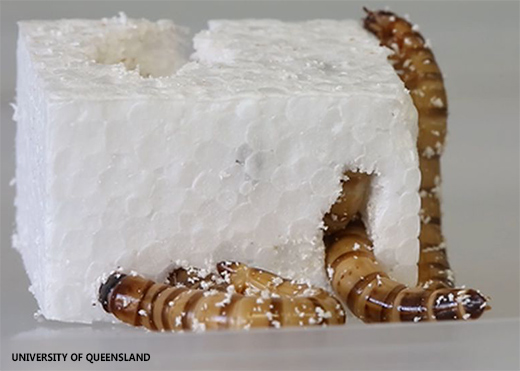
Humans were already using black vortex larvae or 'superworms' as food for their pet reptiles. But now that scientists have discovered their extraordinary ability to digest plastics, their importance may increase.
Scientists at the University of Queensland in Australia say that these helpless larvae, whose scientific name is Zophobas morio, can not only chew polystyrene but also thrive by eating polystyrene.
Over three weeks, the scientists fed the superworms various foods, some with polystyrene foam, some with cochlear implants, and others with a fast diet.
Dr. Chris Rinke, of the university's School of Chemistry and Molecular Biosciences, said: "We found that superworms not only eat foods containing polystyrene but also gain a slight weight."
He added: "This research shows that these insects can probably get energy from polystyrene with the help of microbes in their intestines."

Polystyrene causes hazardous plastic waste that can add chemicals to water sources and break down into microplastics. Therefore, if these organic processes could operate on an industrial scale, superworms could play a significant role in reducing the level of human pollution.
"Superworms are like small recycling plants that break down polystyrene in their mouths and then feed it to the bacteria in their gut," said Dr. Rinke.
The researchers used metagenomics to find several encoded enzymes that eliminate polystyrene and styrene.
"Plastics that break down from this reaction can then be used by other microbes to make compounds, such as bioplastics," said Dr. Rinke.
The team hopes the bio-up cycling will be able to recycle plastic waste and reduce landfills.
The research co-author, a Ph.D. student, said their goal was to further develop gut bacteria in the laboratory and further test its ability to reduce polystyrene.
"Then we can see how we can take this process to the level of an entire recycling plant".
Dr. Rinke said there are many opportunities for the biodegradation of plastic waste.
"Our team is passionate about advancing this scientific research," he said.
The study was published in the scientific journal Microbial Genomics.
